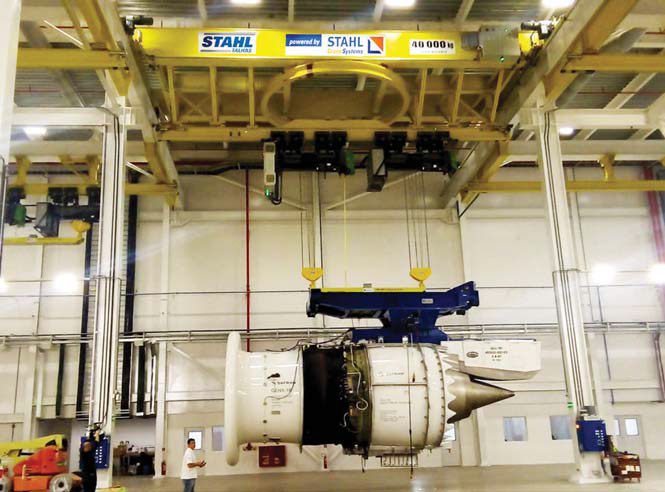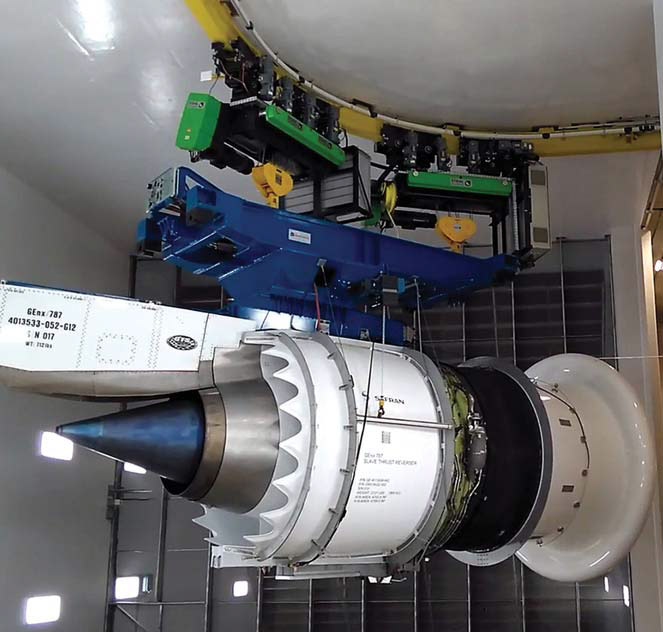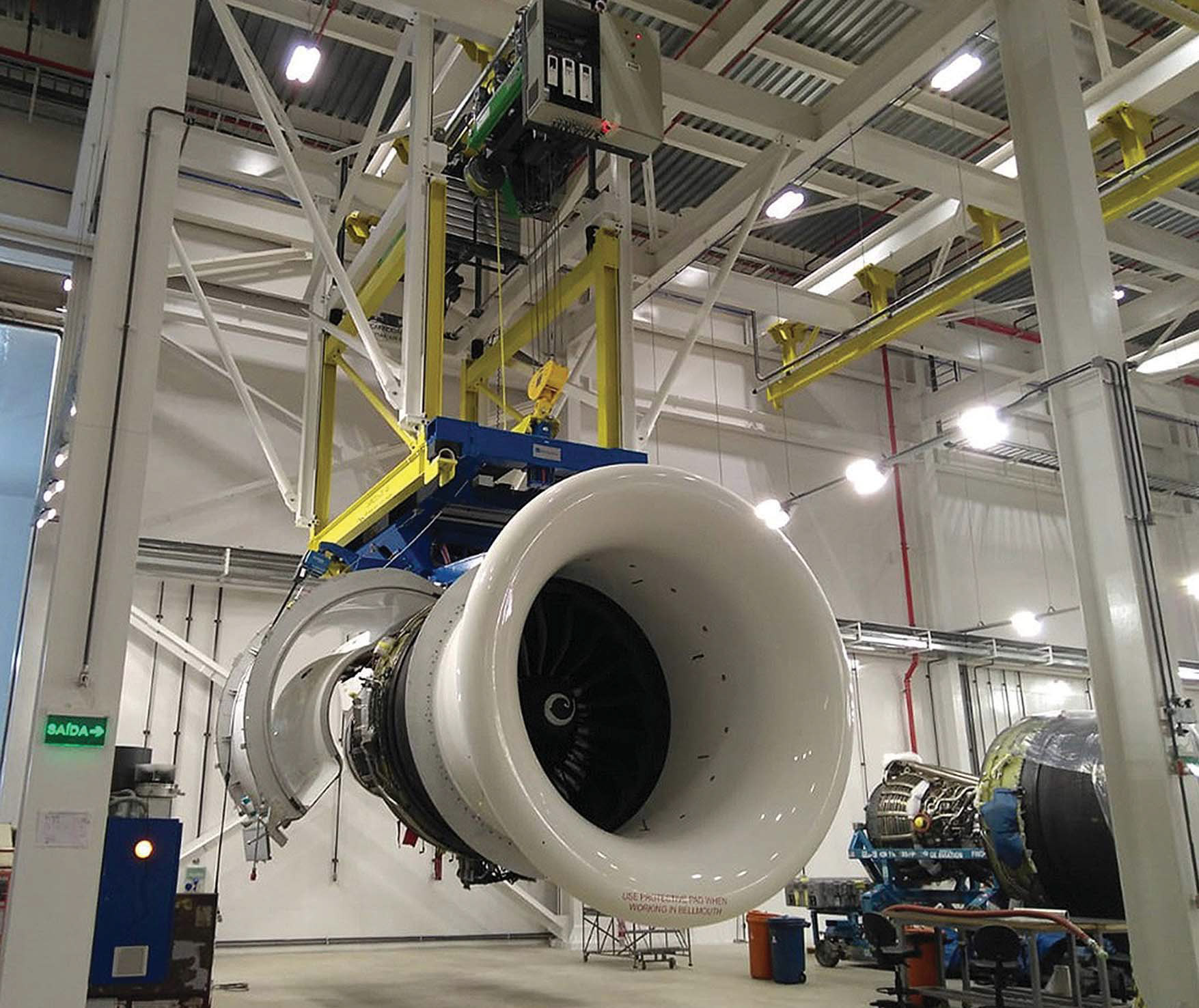Engine Room
9 May 2019A jet engine maintenance facility in Brazil is using a highly automated system manufactured by Stahl Talhas for transporting engines.
GE Aviation, a division of American conglomerate General Electrics, commissioned a new plant with state-of-the-art test laboratory in Três Rios, Brazil, for the maintenance of its engines.
The company’s GEnx engines, used on Boeing 787 Dreamliner aircraft to accelerate the 245t vessel up to 945kmph during take-off, are regularly serviced and overhauled after 2,500–15,000 take-offs and landing, to ensure safety. The plant in Brazil, operated by GE Celma, is one of several service locations worldwide maintained by GE Aviation.
More than 300 aircraft turbines are serviced at GE Celma’s main complex in Petropolis every year, with the engines completely dismantled, inspected, cleaned, repaired if necessary and then reassembled—a process that can take up to 65 days and involve over 12,000 parts.
Every jet engine is then tested under simulated flight conditions, including takeoff, landing and cruise mode, in a special test cell before it is put back into service.
To accommodate the Dreamliner’s new, large GEnx engines, which require larger maintenance areas and more efficient test cells, the new plant at Três Rios was built, incorporating one of the largest and most modern test bays in the world.
The plant is equipped with comprehensive control technology for fast data processing, automatic fault diagnosis, and real-time display of test results. It also features an intelligent crane and lifting system developed by Stahl Talhas, the Brazilian certified partner of Germany’s Stahl CraneSystems.
The highly-automated, custom-built transport system is designed to manage the complete handling of the turbines, from unloading on arrival to transport to the maintenance stands, and safe suspension in the testing room.
“The complexity of the facility called for a high degree of technical sophistication,” said Sandro Galtieri, managing director at Stahl Talhas. “On the one hand, the low overall height of the plant posed a particular challenge for the development of the structural and mechanical design. On the other, the entire operating logic, including electrical design and software, placed high demands on our engineers. The hoists and cranes communicate with each other permanently to ensure that everything runs smoothly.”
The system covers a central aisle, eight maintenance areas, and a testing area, with the engines transported from the central aisle to the maintenance bays. The turbines in the central aisle are handled by a 40t-capacity double-girder overhead crane, with a 10t single-girder crane installed to transport turbine parts and components.
The eight maintenance areas are equipped with monorails.
The crane runways are connected by an interlock system for crane locking, with a camera-based system detecting the positions of the runways, using barcodes, to automatically align them with an accuracy of within 1mm, ensuring a smooth transition for the cranes between runways.
In total, four 20t frequency-controlled SHF 60 wire rope hoists and two 5t frequency-controlled SHF 50 wire rope hoists, all manufactured by Stahl CraneSystems, were used. A switch on the radio control enables the operator to switch between tandem operation and normal operation of the hoists, and all the hoists are equipped with articulated trolleys for entry into the test cell.
Because the height of the monorail runway in the turbine testing room drops from 400 to 245mm and the internal beam height is then only 201mm, a special low articulated trolley had to be designed for the SHF 60 hoists. Construction of the Três Rios plant took two years and was inaugurated in October 2018. One further step is required to bring the plant up to full capacity, said Galtieri: “The engines must be moved into the maintenance stations rear side first. For entry into the maintenance stations on the left, this makes it necessary to rotate the engines 180° in the central aisle.
“So far, only the maintenance stations on the right side can be used, so a rotating crab will soon be installed on the double girder overhead travelling crane to complete the system.”


